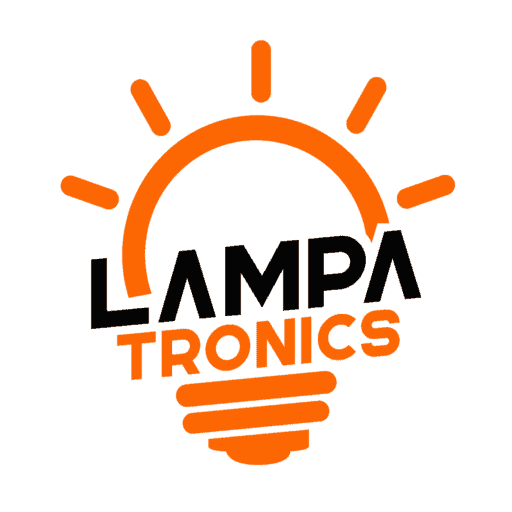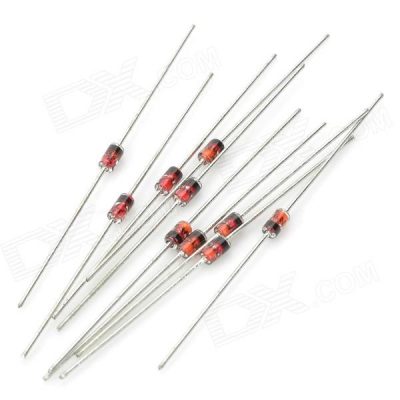74139 (Dual 2-Line to 4-Line Decoder/Demultiplexer)
Description
The 74139 is a Dual 2-Line to 4-Line Decoder/Demultiplexer. It is part of the 7400 series of ICs and is used in digital systems for applications requiring decoding or demultiplexing of binary signals. The IC provides two independent 2-to-4 line decoders, each with active-low outputs.
74139 IC Description:
The 74139 is a dual decoder/demultiplexer with 2-input binary code (2-line) decoded into 4 mutually exclusive output lines. The IC is designed to be used in applications such as address decoding, memory management, or data routing in digital systems. The 74139 is commonly used in systems that require efficient control and management of multiple lines based on a small number of input signals.
Key Features:
- Dual 2-to-4 Line Decoder: The 74139 contains two independent 2-to-4 line decoders, meaning each decoder takes two input lines and decodes them into four output lines.
- Active-Low Outputs: The outputs are active low, meaning the output is low (0) when selected and high (1) when not selected.
- Enable Inputs: Each of the two decoders has an enable input (G1 and G2). The decoder will only function when the enable inputs are active.
- Low Power Consumption: As a CMOS device, the 74139 has low power consumption while operating at high speeds.
- Synchronous Operation: The IC operates in a synchronous manner, meaning it decodes the input values in sync with the logic level of the inputs.
- High-Speed Operation: The IC operates at high speed, allowing it to be used in fast digital systems for decoding or routing.
Pin Configuration (16-pin package):
Here is the pinout for the 74139:
- Pin 1 (G1): Enable input for Decoder 1.
- Pin 2 (A1): Input A for Decoder 1.
- Pin 3 (B1): Input B for Decoder 1.
- Pin 4 (Y1,0): Output 1 (active-low) for Decoder 1.
- Pin 5 (Y1,1): Output 2 (active-low) for Decoder 1.
- Pin 6 (Y1,2): Output 3 (active-low) for Decoder 1.
- Pin 7 (Y1,3): Output 4 (active-low) for Decoder 1.
- Pin 8 (Ground): Ground (0V).
- Pin 9 (Y2,0): Output 1 (active-low) for Decoder 2.
- Pin 10 (Y2,1): Output 2 (active-low) for Decoder 2.
- Pin 11 (Y2,2): Output 3 (active-low) for Decoder 2.
- Pin 12 (Y2,3): Output 4 (active-low) for Decoder 2.
- Pin 13 (B2): Input B for Decoder 2.
- Pin 14 (A2): Input A for Decoder 2.
- Pin 15 (G2): Enable input for Decoder 2.
- Pin 16 (Vcc): Supply voltage (typically 5V).
How It Works:
The 74139 consists of two separate 2-to-4 line decoders. Each decoder has two binary inputs (A and B) and four active-low output lines (Y0, Y1, Y2, Y3). The enable inputs (G1 and G2) control whether the decoders are active. If the enable pin is not activated, the decoder will not output anything.
- Input Lines: Each decoder has two binary inputs (A and B) that determine which of the four output lines will be activated.
- The binary inputs (A and B) can represent four possible states: 00, 01, 10, and 11.
- Output Lines: Based on the combination of A and B, one of the four output lines (Y0, Y1, Y2, Y3) will go low (active), while the others will remain high (inactive). For example:
- A=0, B=0 will activate Y0, making it low, and the rest of the outputs will be high.
- A=1, B=1 will activate Y3, making it low, and the others will be high.
- Enable Inputs: The G1 and G2 inputs enable or disable the decoders:
- If G1 or G2 is high, the corresponding decoder is disabled, and all of its outputs will be high.
- If G1 or G2 is low, the corresponding decoder is enabled, and the inputs will be decoded into the output lines.
- Active-Low Outputs: The outputs are active-low, meaning the selected output will be low (0), and the others will be high (1). The outputs are typically used in systems that require active-low signals.
Truth Table:
Decoder 1 (G1, A1, B1, Y1,0 to Y1,3):
| G1 | A1 | B1 | Y1,0 | Y1,1 | Y1,2 | Y1,3 |
|---|---|---|---|---|---|---|
| L | 0 | 0 | L | H | H | H |
| L | 0 | 1 | H | L | H | H |
| L | 1 | 0 | H | H | L | H |
| L | 1 | 1 | H | H | H | L |
Decoder 2 (G2, A2, B2, Y2,0 to Y2,3):
| G2 | A2 | B2 | Y2,0 | Y2,1 | Y2,2 | Y2,3 |
|---|---|---|---|---|---|---|
| L | 0 | 0 | L | H | H | H |
| L | 0 | 1 | H | L | H | H |
| L | 1 | 0 | H | H | L | H |
| L | 1 | 1 | H | H | H | L |
Applications:
- Address Decoding:
- The 74139 is commonly used in address decoding in memory systems. It can decode a 2-bit address to select one of four output lines, which can then be used to enable a specific memory bank or device.
- Data Routing:
- In multiplexing or demultiplexing applications, the 74139 can route data based on the input address. It helps in directing data from a single source to multiple destinations based on the decoded output.
- Control Systems:
- It is useful in control systems where a limited number of inputs need to be expanded to multiple output lines, such as for controlling peripheral devices in digital systems.
- Multiplexing/Demultiplexing:
- As a demultiplexer, the 74139 is used to route a single data line to one of many output lines based on a select code (input).
- LED or Lamp Driver:
- The outputs of the 74139 can be used to drive LEDs, lamps, or other output devices in systems that require selection or signaling.
Electrical Characteristics:
- Supply Voltage (Vcc): Typically 5V (can operate from 4.5V to 5.5V).
- Input Voltage (Vih): Typically 2V for logical high, Vil is typically 0.8V for logical low.
- Output Voltage (Vol): Low output voltage is typically close to 0V when selected.
- Low Power Consumption: As a CMOS IC, it features low power consumption.
Only logged in customers who have purchased this product may leave a review.
- Image
- SKU
- Rating
- Price
- Stock
- Availability
- Add to cart
- Description
- Content
- Weight
- Dimensions
- Additional information







Reviews
There are no reviews yet.